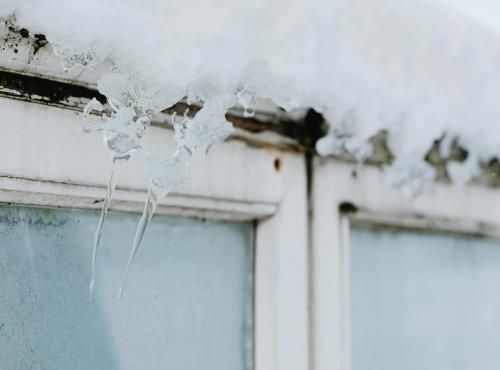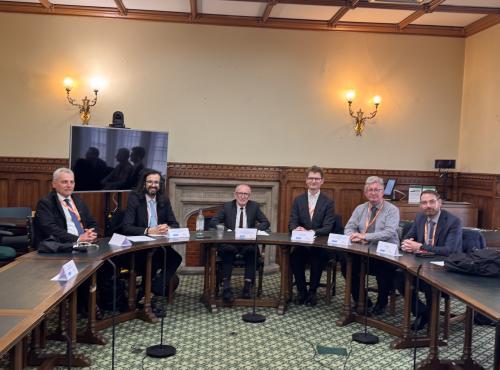Carbon Monoxide alarm regulations are changing - are you ready?
This year, carbon monoxide alarm regulations will expand across all the UK’s four nations.
Many more domestic properties will be required to have carbon monoxide alarms, which alert households to dangerous levels of carbon monoxide exposure.
The All-Party Parliamentary Carbon Monoxide Group’s (APPCOG’s) 2017 report, Carbon Monoxide Alarms: Tenants Safe And Secure In Their Homes, recommended these policy changes, making carbon monoxide alarms mandatory for many more homes, to save lives.
What is carbon monoxide poisoning?
Carbon monoxide can form when any carbon-based fuel is burnt. Typical sources include gas appliances, petrol engines, and solid fuel (e.g., fires and stoves).
Severe carbon monoxide poisoning causes approximately 60 accidental deaths per year in England and Wales (NHS). Exposure to carbon monoxide at sub-lethal levels causes non-specific symptoms, (e.g., headaches, nausea, dizziness). This means exposure to carbon monoxide could be under-reported. The latest data from National Poisons Information Service indicates the majority (57.3%) of exposures occur in the home.
Although the evidence is not yet conclusive, sub-lethal carbon monoxide poisoning is associated with:
- Brain damage
- Sensory impairment
- Heart disease
- Parkinsonism
- Low birth weight in babies
- Cognitive developmental delays in infants (when a pregnant mother has been exposed)
- Respiratory difficulties
Remaining gaps
All four UK governments have recognised the need to mitigate the risk of carbon monoxide exposure in homes, by increasing the number of homes that will be required to install alarms.
However, some gaps remain.
The exclusion of gas cookers
- Gas cookers are excluded from the regulations in England and Scotland.
- A report by National Energy Action found that of the 59% of homes which had a gas cooker, only 25% had the cooker serviced annually.
- In 2019, Gas Safe Register found that 1 in 5 in the UK have unsafe gas appliances.
Alarm type is not mandated
- The type of carbon monoxide alarm is only mandated in Scotland’s regulations.
- This a missed opportunity to ensure landlords and households purchase alarms that meet British Standards. Previously, the APPCOG successfully urged eBay to delist ‘black spot’ and ‘patch indicator’ carbon monoxide alarms. It is important landlords install alarms that provide adequate protection from CO exposure.
- Higher quality alarms which meet the relevant standard are less likely to cause false alerts.
- Alarms with sealed battery units are tamper proof, better value for money, and require minimal (if any) landlord or tenant maintenance.
Owner-occupied households are outside the remit of regulations (except for Scotland)
- The regulations in England, Wales and Northern Ireland cover rented accommodation and new appliance installations, owner occupied homes are regulated by separate rules.
- According to the English Housing Survey, in 2020, of the estimated 23.5 million occupied residential dwellings in England, 15.3 million (65%) were owner occupied. As owner occupiers are not included in England’s regulations (until a new appliance is installed under amended building regulations: Approved Document J), a lot of people will fall through the cracks.
Carbon Monoxide Alarms Save Lives
The Carbon Monoxide Alarms Save Lives campaign will run from July 11th - August 28th this year.
The key messages are:
- UK alarm laws are changing
- Are you protected?
- Getting extra help (start here: Gas Distributions Networks (GDNs))
We want to make sure that everyone knows how to stay safe from carbon monoxide and understands why they need to install carbon monoxide alarms.
In detail: what the regulations mean in all four UK nations
Scotland
Since February 1st, 2022, all Scottish homes are required to have a carbon monoxide alarm in all rooms where there is a fixed combustion appliance (excluding an appliance used solely for cooking) or a flue[1]. In rented properties, landlords are responsible for supplying the alarm. Carbon monoxide alarms must meet the relevant British Standards (EN 50291-1), and must have ‘a sealed battery for the duration of its lifespan’ to prevent tampering or the need for battery changes
England
The Smoke and Carbon Monoxide Alarm (Amendment) Regulations 2022 will come into force on October 1st, 2022, in England following debate in the Second Committee for Delegated Legislation on June 20th and approval in the House of Commons on June 21st. These changes will require carbon monoxide alarms to be installed in all rented accommodation and new build properties where there is a fixed combustion appliance, excluding gas cookers. Carbon monoxide alarms are also required when a fixed combustion appliance (excluding gas cookers) is first installed in any home. Both private and social sector landlords will have a duty to repair or replace alarms, once informed that they are faulty.
Wales
The Welsh Government recently announced that it will bring forward changes from December 2022 1st (delayed from July 15th, 2022) with the Renting Homes (Wales) Act 2016, which under the regulations for Fitness for human habitation (FFHH) will require landlords to ensure working carbon monoxide detectors are fitted in their properties where there is any gas appliance, an oil-fired combustion appliance or a solid fuel burning combustion appliance.
Northern Ireland
Carbon monoxide alarms are a mandatory requirement for all homes where a new fossil fuel appliance is installed in Northern Ireland, after a change to The Building Regulations (Northern Ireland) 2012 came into operation on 31 October 2012. The Private Tenancies Act, which requires carbon monoxide alarms to be installed in privately rented homes and places a duty on landlords to repair them, received Royal Assent on 27 April 2022.
For helping understanding these regulations or to seek legal advice, please contact Citizen’s Advice, who provide a free advice service for England, Scotland, Wales and Northern Ireland.
[1] Government of Scotland, n.d. Tolerable Standard Guidance: Satisfactory Fire Detection and Satisfactory Carbon Monoxide Detection. https://www.gov.scot/binaries/content/documents/govscot/publications/advice-and-guidance/2019/02/fire-and-smoke-alarms-tolerable-standard-guidance/documents/tolerable-standard-guidance-satisfactory-fire-and-carbon-monoxide-detection/tolerable-standard-guidance-satisfactory-fire-and-carbon-monoxide-detection/govscot%3Adocument, p.5.





